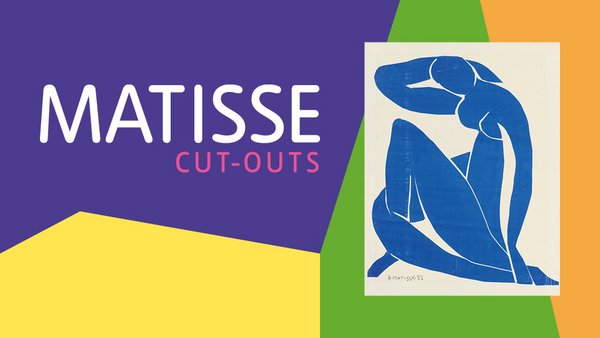
Here, a number of the original Jazz cut-outs are shown with their printed versions lined in glass cases in one long gallery, and what’s immediately evident is how much the printed versions have lost in translation, their vivacity leached by the mechanical process. With that, the forms were then pinned to a surface, often in a process of constant revision, before finally being laid down with glue, or simply left as they were in his studio (film footage allows us to watch this process in action). Under his close supervision assistants painted the paper in bold, bright colours using gouache to which he, with surprising dexterity, applied a pair of scissors – hence “drawing with scissors”, though as the term “maquette” suggests, the cutting is perhaps closer to sculpting, since you’re also physically taking away as well as following a line. He was already very ill and infirm and Jazz was the fullest expression to date of his simple cut-out technique, developed – though for years used as a tool to compose his paintings – because he could no longer hold a brush effectively. By that time Matisse had been living in Vence for four years, having fled there from Nice to escape the bombing in 1943. Just look at the “maquettes” for Jazz, the paper cut-outs made during the war and finally published in book form by the important art publisher Tériade (who also came up with the title for this collection of falling and dancing figures) in 1947. There’s poignancy in Matisse’s late works, in those exquisite cut-outs that occupied him so intensely in the remaining decade of his life and to which this exhibition is devoted, and it makes the joy even sweeter. A chink where sadness and vulnerability creep in and make their shadowy presence felt, or else all that joy would be insufferable. But there’s got to be something else there too. You can’t help yourself it’s intoxicating. When something expresses itself with such an irrepressible joie de vivre, you fall in love with it.

The dichotomy of the head and the eye may also explain why it’s hard to love, rather than to simply admire, Picasso, and why it’s so easy to fall head over heels for Matisse. And not just with the fury, but the fear.

And when it comes to the late works of either artist, I’ve always found myself in sympathy with the old-age rage of Picasso. Me? I’ve always gone for the head, not the eye, or indeed the heart. And how we respond shows, I think, a difference in temperament, too. It’s also a difference in artistic temperament.


 0 kommentar(er)
0 kommentar(er)
